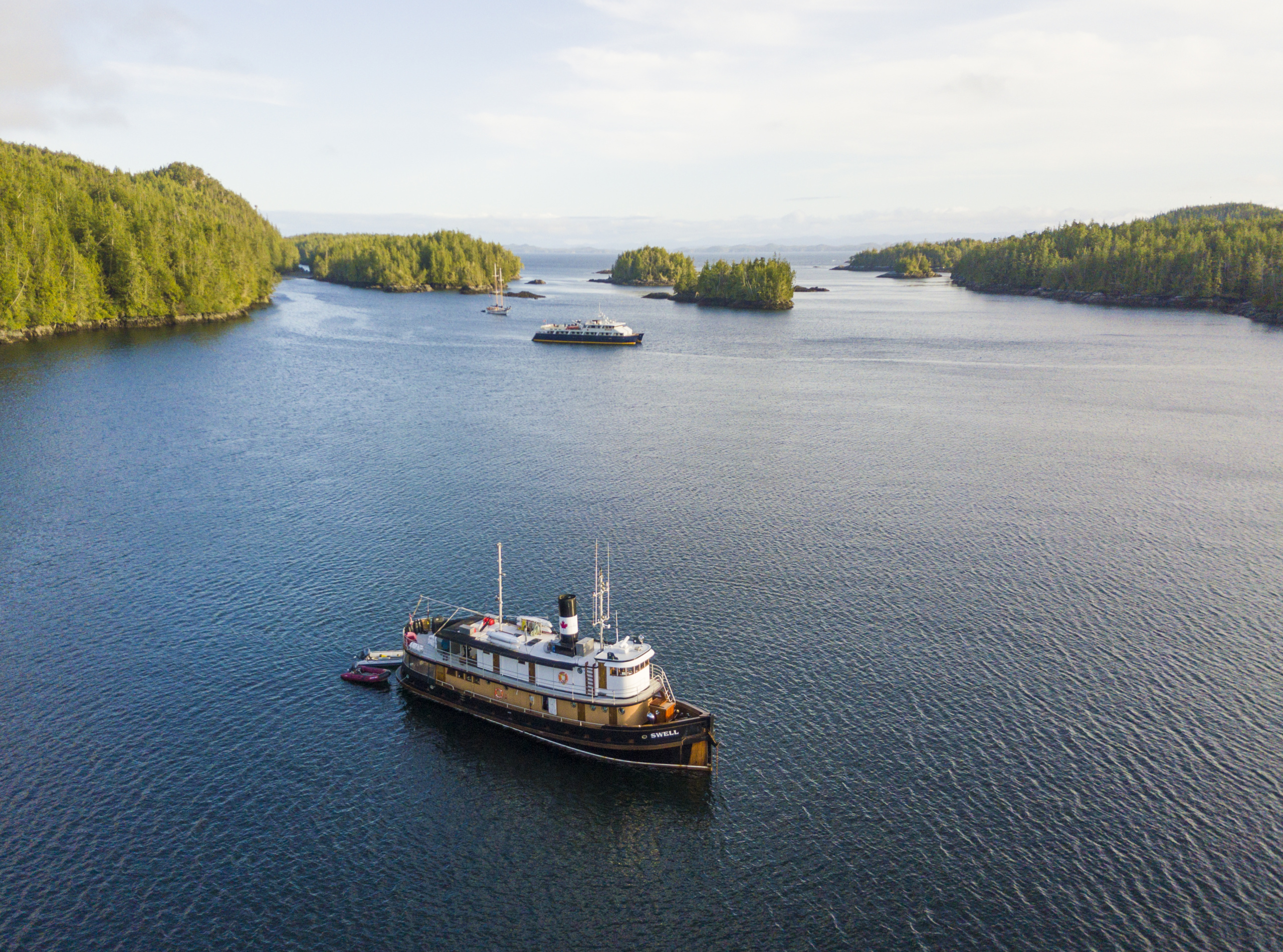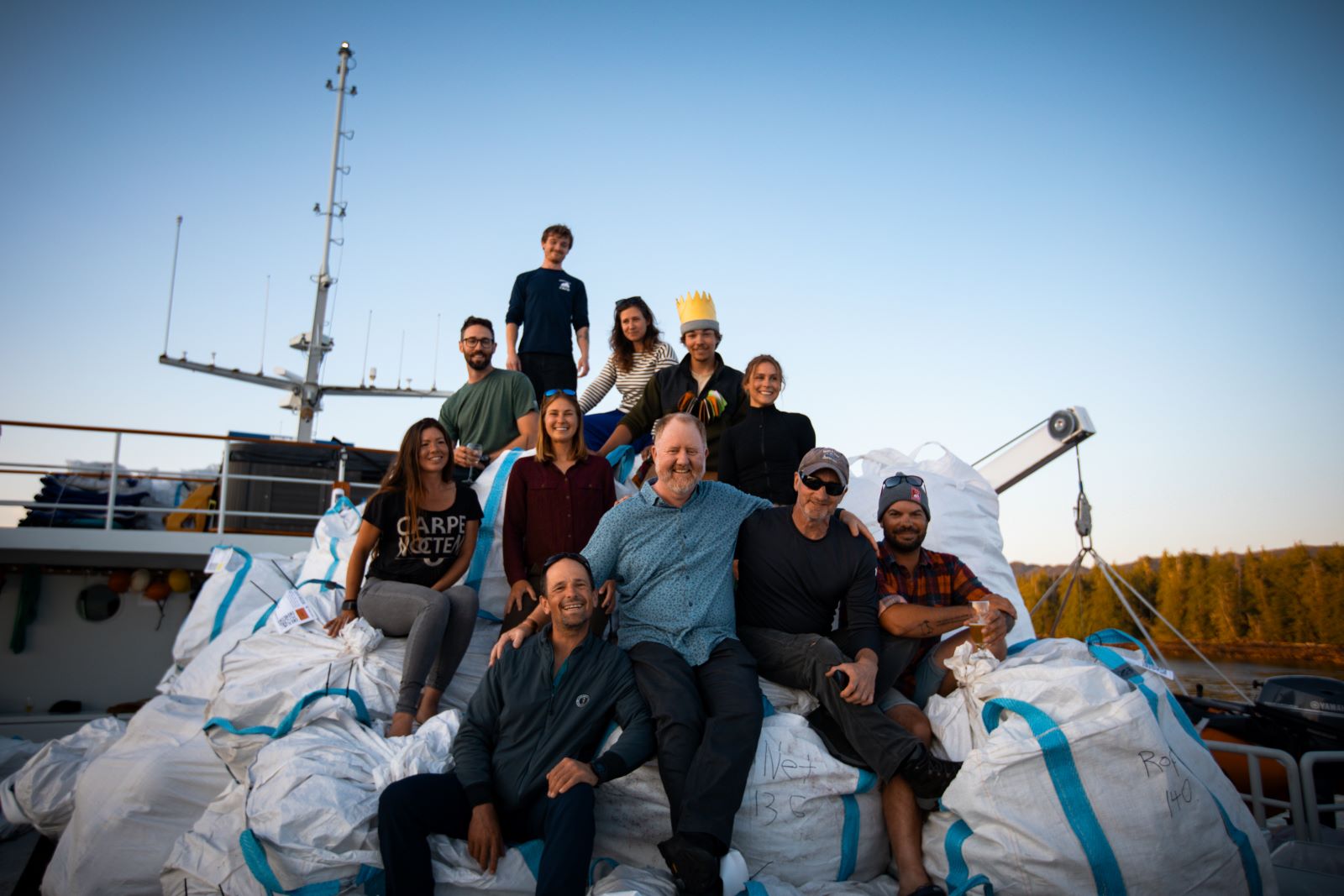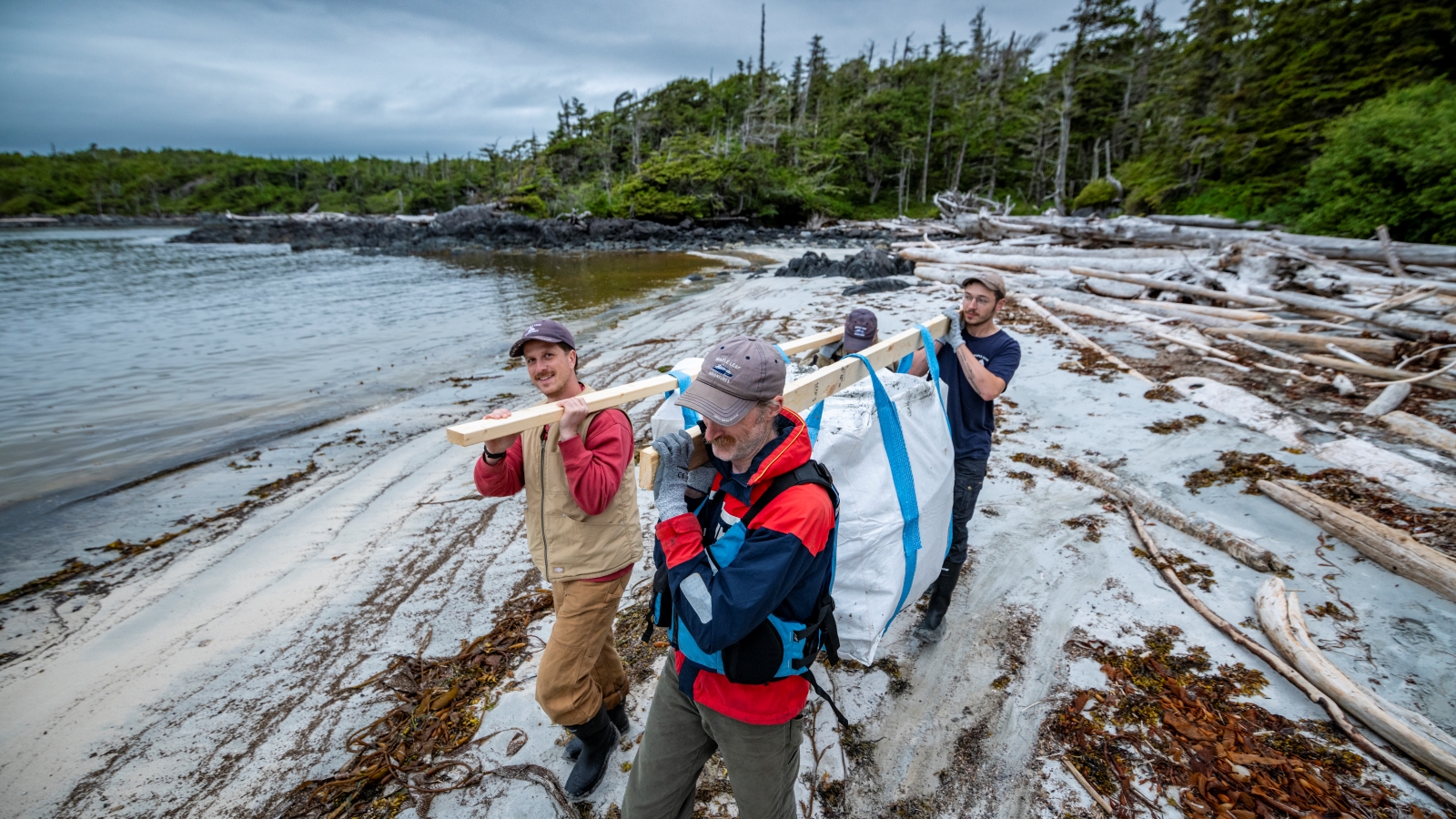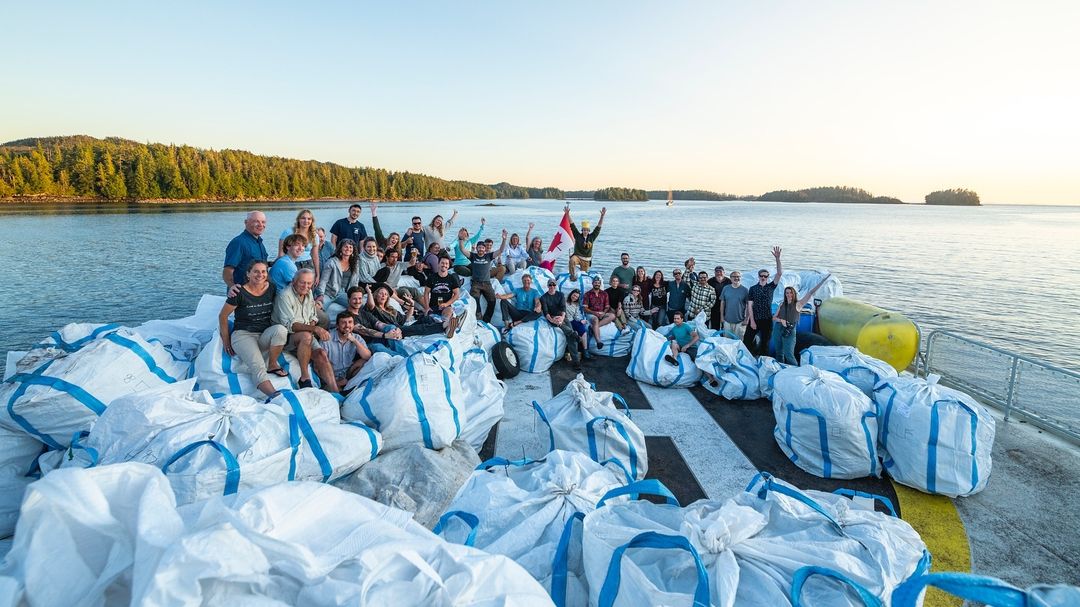From top to bottom: Maple Leaf, Cascadia, Swell. Each vessel follows her own unique itinerary, they are rarely ever this closely aligned! Photo: Jeff Reynolds.Our little ships are back on the move! If you’re fortunate enough to live on the Salish Sea, you may have already spotted Swell or Maple Leaf plying up and down the coast.Few understand the character of these iconic vessels quite like our Naturalist, Sherry Kirkvold. Sherry has been one of the Maple Leaf family for twenty-five years, as well as an accomplished geographer, writer, musician, photographer and teacher. What she carries across all of these works is a commitment to celebrating and educating people on the coast.With the first trips of the season underway, we caught up with Sherry for a Naturalist’s take on these little coastal ships and their undeniable charm.
What do you enjoy about being a naturalist on these ships?The amazing opportunities to get into places that you can’t get to any other way. There are no roads, there are no airports. The only way to get to these places is by water. And I think that’s one of the really special things about these ships, being able to go to places that are just really out there.
Could you tell us more about the ships themselves?With Maple Leaf, there’s a lot of romance about going out on a classic sailing ship, and one of the most beautiful ships on the entire coast. When you get on board—I don’t know how it happens, but it happens every time—there’s this instant group bonding. And you know, there’s also that sense of adventure that comes with going out on an old wooden sailing ship. And yet you have the most delicious meals and crew to look after you.I take a lot of inspiration from our guests and one moment that springs to mind is, 84-year-old Elizabeth: Maple Leaf had her sails up and she is at the helm steering the ship. When I’m 84, I want to be steering a schooner!Swell is a tug and a real trooper. And yet she’s really, really comfy. You’ve got a lot of space—you’re always welcome to go up into the wheelhouse, which looks out on the various decks. There’s some decks that are covered, so you can even be outside in the rain.Cascadia is a bigger ship, but she’s still a small ship. She’s still able to go to places that a lot of other cruise-type holidays could never get to. And she’s really comfortable. I would use the word elegance to describe her. It’s a place where you can go into remote wilderness and be completely cared for and comfortable.
How does small ship travel help in engaging with the natural world?Well, I think that the word “small” is a big part of it. You are in a small group, so you have a lot of personal attention. You have a naturalist there to answer questions and provide you with lots of information. There’s the chance to go ashore and explore. And it’s quite different being in a little group of say, 12 guests, with a naturalist and sometimes another guide, as opposed to being corralled onto a big tour bus of 50 people. The experience is just vastly different and I think that the small part is the really important part.Do you have like a favorite moment from your time on one of the ships?I recall one time being at anchor on Maple Leaf and we had humpback whales all around the ship. We were out on the deck in the dark, listening out for the whoosh! all around. And that was just a magical, magical time.



